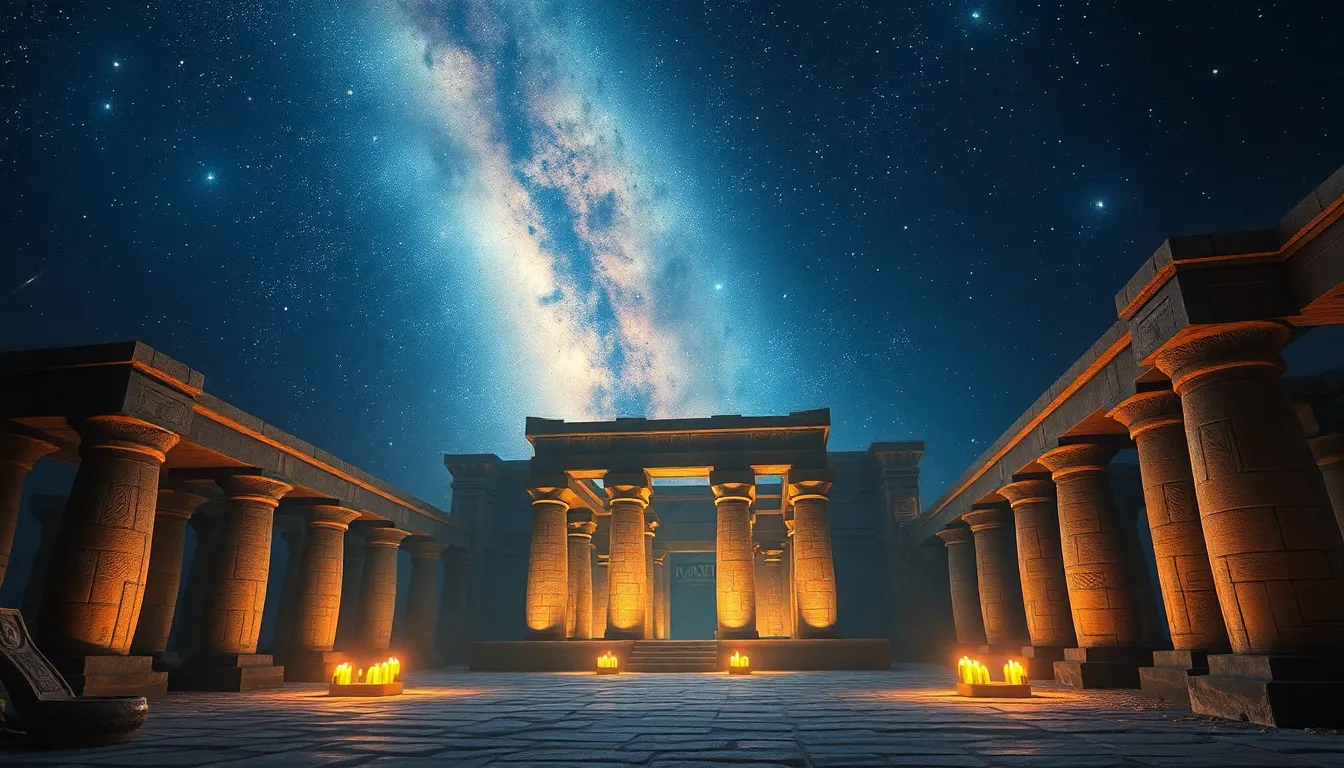The Temple of Dendera: A Celestial Sanctuary
I. Introduction
The Temple of Dendera, located in the modern-day city of Dendera near Luxor, Egypt, is one of the best-preserved temple complexes from ancient Egypt. Dedicated primarily to Hathor, the goddess of love, beauty, music, and fertility, this temple stands as a monumental testament to the religious practices and architectural prowess of the ancient Egyptians.
Significant in ancient Egyptian culture, the Temple of Dendera served not only as a place of worship but also as a center for astronomy and healing. Its intricate carvings and celestial motifs reflect the Egyptians’ deep understanding of the cosmos and their beliefs surrounding the divine.
This article aims to explore the historical background, architectural features, celestial symbolism, art and inscriptions, rituals, modern discoveries, and the enduring legacy of the Temple of Dendera.
II. Historical Background
The construction of the Temple of Dendera began during the reign of Pharaoh Ptolemy VIII and continued through the Ptolemaic period, roughly from 230 BCE to 10 BCE. Several key pharaohs were involved in its development, including Cleopatra VII, who contributed to its completion.
Geographically, the temple is situated on the west bank of the Nile, a location chosen for its symbolic link to the afterlife. The proximity to the river also provided essential resources for the construction and maintenance of the temple.
Throughout history, Dendera has witnessed significant events, including the Roman occupation, during which the temple became a focal point for the syncretism of Egyptian and Roman religions.
III. Architectural Features
The Temple of Dendera is renowned for its grand layout and intricate design. The temple complex is enclosed by a massive wall and features a series of hypostyle halls, sanctuaries, and courtyards. Key architectural highlights include:
- The main temple, dedicated to Hathor, which features a beautifully decorated ceiling.
- The Birth House (Mammisi), where rituals related to the goddess’s birth were conducted.
- The Sacred Lake, used for purification rituals.
Unique architectural elements such as the temple’s astronomical ceiling are particularly noteworthy. The ceiling represents the sky goddess Nut, adorned with stars and zodiac symbols, illustrating the ancient Egyptians’ advanced understanding of astronomy.
IV. Celestial Symbolism
The Temple of Dendera is profoundly connected to the goddess Hathor, who is often depicted as a celestial cow, symbolizing the heavens. Her association with music and joy is reflected in the temple’s vibrant reliefs and the festivals that took place here.
Astronomical alignments within the temple are remarkable, with many sections designed to align with specific celestial events. For instance, the temple’s layout corresponds with the heliacal rising of the star Sirius, which signified the flooding of the Nile and the beginning of the agricultural year.
The zodiac and sky images in the temple hold significant meaning, representing the cycle of life, death, and rebirth, central themes in Egyptian cosmology. The zodiac signs depicted in the ceiling reflect the belief that the movements of celestial bodies influence human affairs.
V. Art and Inscriptions
The Temple of Dendera is adorned with an array of carvings and reliefs that tell stories of mythology, divine interactions, and historical events. The artistic style is characterized by detailed and vibrant depictions of gods, goddesses, and pharaohs, showcasing the skill of ancient Egyptian artisans.
Art in Dendera serves as a critical medium for expressing religious beliefs and cultural values. The temple walls are covered with scenes of rituals, offerings, and the goddess Hathor, emphasizing her significance in the daily lives of the ancient Egyptians.
Notable inscriptions include the famous Dendera zodiac, a relief that represents the heavens and includes the twelve signs of the zodiac, revealing the importance of astrology in Egyptian society. These inscriptions not only convey religious messages but also provide insight into the political climate of the time.
VI. Rituals and Worship Practices
The Temple of Dendera was a vibrant center for religious activities, where various ceremonies were conducted, including offerings, festivals, and rites dedicated to Hathor. The most significant of these was the annual festival of Hathor, which celebrated her role as a nurturing mother and goddess of music.
Priests played a vital role in temple life, performing daily rituals and maintaining the temple’s sanctity. The community also participated in various ceremonies, reinforcing the temple’s status as a communal space for spiritual connection.
Festivals at Dendera attracted worshippers from all over Egypt, contributing to the temple’s prominence as a pilgrimage site. These events were characterized by music, dance, and feasting, reflecting the joyous aspect of worship associated with Hathor.
VII. Modern Discoveries and Archaeological Work
Recent excavations at the Temple of Dendera have uncovered significant findings that shed light on its historical context and architectural techniques. Archaeologists have discovered inscriptions, artifacts, and remnants of ancient rituals that provide valuable insights into the daily life of worshippers and the temple’s operational aspects.
The temple continues to play a crucial role in contemporary Egyptology, attracting scholars and tourists alike. Ongoing research aims to decode the rich symbolism within the temple and understand the broader implications of its art and architecture in ancient Egyptian society.
Preservation efforts are paramount, as the temple faces challenges from environmental factors and tourism. Various organizations are dedicated to ensuring the temple remains a vital part of Egypt’s cultural heritage for future generations.
VIII. Conclusion
The Temple of Dendera stands as a celestial sanctuary, embodying the ancient Egyptians’ reverence for the cosmos and their deities. Its significance as a religious and cultural site continues to resonate, showcasing the intricate relationship between humanity and the divine.
The enduring legacy of the Temple of Dendera lies in its art, architecture, and the rich tapestry of rituals that once filled its halls. As research and exploration continue, the temple offers endless possibilities for understanding ancient Egyptian civilization and its profound connection to the universe.




